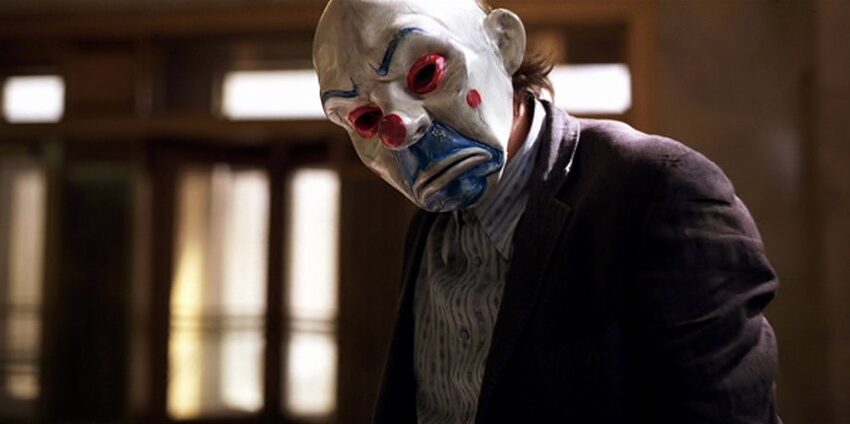
The Dark Knight (2008): A Symphony of Chaos in Gotham’s Underbelly – Film Review

Christopher Nolan’s 2008 masterpiece, “The Dark Knight,” is more than just a superhero movie; it is a richly woven tapestry of crime, morality, and chaos. Seamlessly blending elements of a crime thriller with the superhero genre, Nolan crafts a cinematic experience that transcends expectations. With Heath Ledger’s iconic portrayal of the Joker and Christian Bale’s return as Batman, the film delves deep into the psyche of its characters, presenting a Gotham City that is as complex and troubled as they are.
Narrative: The Descent into Anarchy
“The Dark Knight” picks up the thread from “Batman Begins,” exploring the consequences of Batman’s presence in Gotham. The film introduces the Joker, a character of pure anarchy and chaos, whose diabolical schemes set the stage for a battle not just for Gotham’s soul, but also for the moral compass of its guardian, Batman.
The narrative weaves through a series of meticulously planned heists, ambushes, and psychological games, courtesy of the Joker. Harvey Dent (Aaron Eckhart), Gotham’s white knight district attorney, becomes a pivotal figure in this battle, embodying the city’s hope for a crime-free future and its potential for despair.
Behind the Scenes: Crafting Gotham’s Gritty Reality
Nolan, known for his preference for practical effects over CGI, brought this philosophy into “The Dark Knight.” The film’s action sequences, including the infamous truck flip, were performed with minimal digital effects, adding to the visceral realism of the movie. The decision to shoot several key sequences with IMAX cameras was revolutionary at the time, offering an immersive experience that was both grandiose and intimate.
Filming in locations like Chicago and Hong Kong helped ground the story in a tangible reality, distancing it from the more stylized portrayal of Gotham in previous Batman films. This approach to setting and cinematography adds a layer of authenticity that makes the film’s exploration of good, evil, and everything in between more compelling.
Performances: Ledger’s Joker, A Portrayal for the Ages
While “The Dark Knight” boasts powerful performances from its ensemble cast, it is Heath Ledger’s Joker that stands as the film’s crowning achievement. Ledger’s portrayal is a terrifying blend of anarchic philosophy and unpredictable menace, a performance that earned him a posthumous Oscar. Christian Bale continues to bring depth to Batman, portraying the Caped Crusader as a tormented hero grappling with the cost of his crusade.
Aaron Eckhart’s Harvey Dent is a tragic figure, embodying Gotham’s best and worst. His transformation into Two-Face is both a physical and moral metamorphosis, marking one of the film’s most poignant arcs.
Cinematography and Score: The Heartbeat of Gotham
Wally Pfister’s cinematography captures the chaos and beauty of Gotham, using light and shadow to paint a city that is both a battleground and a character in its own right. Hans Zimmer and James Newton Howard’s score is a character in itself, building tension with its pulsating rhythms and haunting melodies.
Themes: A Dark Reflection on Morality and Chaos
At its core, “The Dark Knight” is a meditation on the nature of good and evil. The film challenges the viewer to confront the uncomfortable gray areas of morality. The Joker’s anarchic philosophy acts as a catalyst that forces characters to confront their ideals and the harsh realities of their choices.
Cultural Impact: Redefining the Superhero Genre
“The Dark Knight” not only redefined what a superhero movie could be, but it also raised the bar for cinema as a whole. Its impact is evident in the wave of darker, more complex superhero films that followed, as well as its influence on popular culture and its commentary on societal issues.
Final Thoughts
“The Dark Knight” stands as a testament to the power of storytelling when coupled with masterful direction, performances, and technical prowess. It’s a film that does more than entertain; it provokes thought, challenges perceptions, and immerses the viewer in a world where the line between hero and villain is blurred. Nolan’s Gotham is a city of chaos and order, a labyrinth where each character must find their path, and the viewer is compelled to follow.




